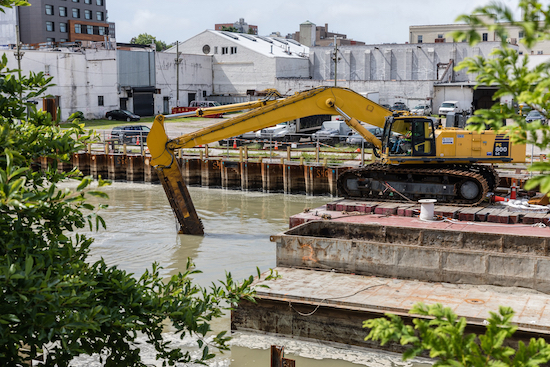Believe it or not, the Gowanus Canal cleanup won’t start until 2020

EPA began the last phase of its dredging and capping pilot project on Monday, the third and final study before the actual cleanup of the Gowanus Canal commences. Eagle photos by Paul Frangipane
It’s the final countdown.
The Environmental Protection Agency began the last phase of its dredging and capping pilot project on Monday, the third and final study before the actual cleanup of the Gowanus Canal commences.
While some may have assumed the cleanup was already ongoing, EPA was only performing a series of tests to determine the most effective methods for eventually cleaning the entire canal.
